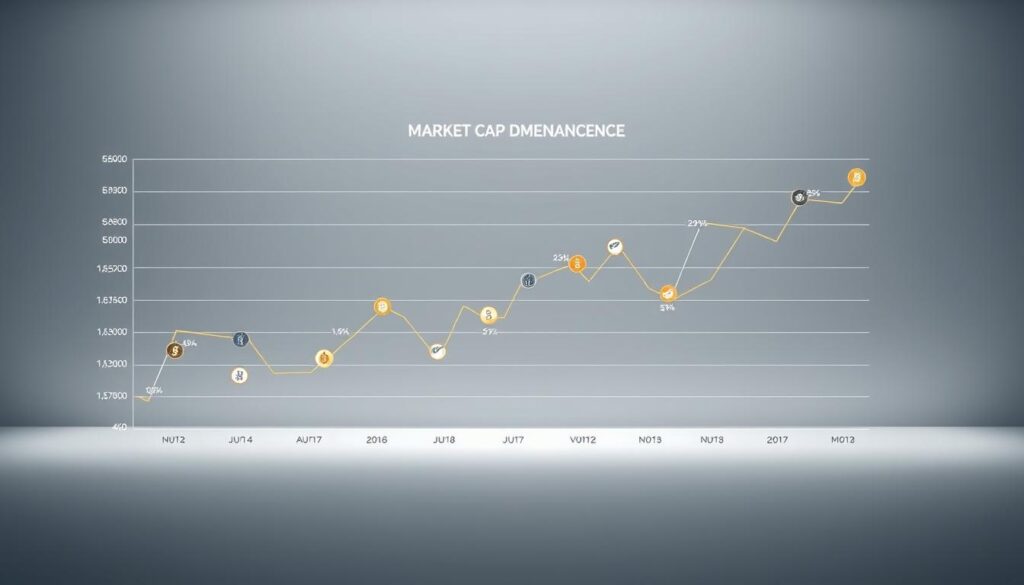Now Reading: How Cross-chain Bridges Work: A Beginner’s Guide
- 01
How Cross-chain Bridges Work: A Beginner’s Guide
How Cross-chain Bridges Work: A Beginner’s Guide
The Web3 ecosystem now spans hundreds of specialized networks. From Ethereum to Solana, each blockchain offers distinct advantages in speed, cost, and functionality. But these networks operate like islands – unable to share data or value directly.

This isolation creates fragmented markets where digital assets remain trapped on their native chains. Imagine having dollars that only work in one store. That’s the challenge facing today’s multi-chain world.
Specialized connectors solve this problem by enabling token movement between networks. These tools act as translators, converting assets into compatible formats for different systems. Their role grows more critical as decentralized apps spread across multiple platforms.
This guide breaks down the mechanics behind these vital connectors. You’ll learn how they maintain security during transfers and why they’re essential for DeFi’s growth. We’ll explore different design approaches and their real-world impacts on Web3 adoption.
Key Takeaways
- The Web3 ecosystem now operates across 100+ separate networks
- Native blockchain communication remains technically impossible
- Specialized connectors enable asset movement between chains
- Secure transfers prevent double-spending across networks
- Interoperability fuels DeFi innovation and user choice
Introduction to Blockchain Interoperability
Digital ledgers have evolved into specialized networks with unique strengths. Like isolated islands, each blockchain operates under separate rules for transactions, security, and governance. This specialization creates innovation hubs but limits collaboration across the blockchain ecosystem.

Understanding Isolated Blockchain Ecosystems
Today’s 125+ blockchain networks function like sovereign nations. Key differences create technical barriers:
- Divergent consensus mechanisms (Proof of Work vs Proof of Stake)
- Unique smart contract languages (Solidity, Rust, Move)
- Conflicting transaction validation processes
These variations enable tailored solutions for specific use cases. A gaming chain prioritizes speed, while a financial network emphasizes security. However, assets on one blockchain can’t natively interact with others.
The Need for Cross-Chain Communication
Isolated networks create economic inefficiencies. Over $80 billion in crypto assets remain trapped on individual chains according to DeFiLlama data. This fragmentation:
- Limits liquidity pools for decentralized exchanges
- Forces users to maintain multiple wallets
- Slows innovation through duplicated efforts
Interoperability solutions address these challenges by creating pathways between different blockchains. Like international trade agreements, they enable networks to exchange value while preserving their unique features.
The Role of Cross-chain Bridges in Web3
Modern blockchain systems thrive on specialization but struggle with collaboration. These decentralized networks excel in specific areas – some prioritize speed, others focus on security. Yet their isolated nature creates friction in value exchange and data sharing across platforms.

Connecting Disparate Blockchain Networks
Interoperability tools act as digital highways between blockchain networks. They perform three critical functions:
- Convert asset formats for cross-platform compatibility
- Verify transactions across multiple validation systems
- Synchronize smart contract operations between chains
This connectivity unlocks trapped value. A user can move Ethereum-based tokens to a faster network like Polygon through cross-chain bridge solutions, paying lower fees for DeFi transactions. Developers gain access to combined liquidity pools, creating more powerful decentralized applications that leverage multiple chains simultaneously.
The impact extends beyond simple transfers. Cross-network bridges enable:
- Multi-chain yield farming strategies
- Cross-platform NFT marketplaces
- Risk-diversified asset portfolios
These innovations transform isolated ecosystems into collaborative networks. Users access better rates and features, while developers build products combining the strengths of multiple chains. The result? A more efficient Web3 landscape where value flows freely across specialized platforms.
Diving into the Mechanics of Cross-Chain Bridges
Blockchain interoperability hinges on precise technical choreography. When moving digital assets between networks, automated protocols handle complex verification steps behind the scenes. This process transforms isolated ledgers into collaborative systems without compromising security.

How Asset Transfers Occur
Let’s break down Alice’s transfer from Ethereum to Polygon:
- She sends 10 ETH to a designated source chain address
- Validators freeze these tokens using a smart contract
- The system mints 10 wrapped ETH on Polygon (destination chain)
- Alice receives new tokens in 2-5 minutes
This atomic swap prevents double-spending by synchronizing actions across both networks. Validators confirm transaction finality before releasing funds, ensuring irreversible settlements.
The Function of Smart Contracts
Self-executing smart contracts power this entire process. They perform three critical tasks:
- Verify asset ownership through cryptographic proofs
- Maintain 1:1 collateral ratios between chains
- Trigger minting/burning based on validator consensus
These automated agreements eliminate third-party risks while enabling liquidity pool integration across networks. Developers program specific rules into each contract, creating trustless bridges that operate 24/7 without human oversight.
Exploring Different Types of Bridge Models
Blockchain networks use distinct methods to move value between systems. Three primary models handle asset transfers while maintaining security and compatibility. Each approach balances speed, liquidity, and technical complexity differently.
Lock and Mint Model
This method locks original tokens on their native chain using smart contracts. Equivalent wrapped tokens then appear on the destination blockchain. For example, wBTC lets Bitcoin holders use Ethereum DeFi apps while keeping BTC price exposure.
Burn and Mint Approach
Users permanently destroy tokens on the source network. The system creates new native versions elsewhere. This maintains consistent supply totals but requires coordinated validation across chains.
Lock and Unlock Mechanism
Pre-funded liquidity pools enable instant transfers. Locking tokens on one chain unlocks identical assets from reserves on another. This method speeds transactions but demands large pooled reserves upfront.
Choosing the right model depends on use cases. Lock/mint suits blockchain interoperability solutions needing wrapped assets. Burn/mint works for native token transfers. Lock/unlock excels when speed outweighs liquidity costs.
Security Challenges and Trust Considerations
Blockchain connectors face intense scrutiny after major security breaches drained millions. Over 60% of Web3 exploits target these systems, per Chainalysis data. The Poly Network hack ($600M) and Wormhole attack ($350M) exposed critical weaknesses in cross-network communication protocols.
Risks in Cross-chain Messaging
Attackers exploit three primary vulnerabilities:
- Flawed smart contract codes enabling fake transactions
- Centralized validator groups susceptible to bribes
- Oracle networks reporting inaccurate asset prices
The Poly Network breach occurred through mismatched contract permissions. Hackers manipulated authorization checks to drain funds. Such incidents highlight the complex trust assumptions required when moving assets between networks.
Strategies for Enhancing Bridge Security
Leading protocols now deploy multi-layered protection:
- Multi-signature approvals for large transfers
- 24-hour delays on withdrawals exceeding $1M
- Diverse validator groups from separate jurisdictions
Some systems use cryptoeconomic safeguards. These require validators to stake collateral exceeding potential attack profits. Users should verify audit reports and track record before transferring funds through any connector service.
Harnessing the Power of Cross-chain bridges
Digital asset holders now unlock unprecedented financial opportunities through multi-chain strategies. These tools transform idle crypto holdings into productive assets across decentralized platforms.
Maximizing Token Utility and Liquidity
Blockchain interoperability lets users tap into diverse yield sources. A Bitcoin holder can convert BTC to wBTC for Ethereum-based lending, while Polygon NFTs gain utility as loan collateral on Ethereum via NFTfi.
Three key benefits emerge:
- Access high-yield pools on low-fee networks
- Execute arbitrage between mismatched asset prices
- Combine liquidity from separate ecosystems
This flexibility solves the “trapped value” problem. Tokens move freely between chains, working harder for their owners. DeFi platforms aggregate deeper reserves, creating better rates for borrowers and lenders.
Real-world examples show the potential:
- Stablecoin transfers to layer-2 networks reduce transaction costs by 90%
- Multi-chain staking generates compound returns
- NFT collections gain utility beyond native platforms
The ecosystem benefits as capital flows freely. Users optimize portfolios while developers build cross-platform apps. This synergy drives Web3 adoption through practical financial solutions.
Advancements in Cross-chain Bridge Technology
Emerging standards are transforming how decentralized systems interact. Chainlink’s Cross-Chain Interoperability Protocol (CCIP) leads this shift with an open-source framework designed for universal connectivity. Unlike basic asset transfers, CCIP enables complex data exchanges between blockchain networks through standardized messaging.
The Impact of CCIP and Decentralized Oracles
This protocol introduces three security layers: a monitoring system for suspicious activity, decentralized oracle networks, and upgraded validation methods. The Risk Management Network scans transactions in real-time, while independent node operators verify actions across chains.
CCIP’s Off-Chain Reporting (OCR 2.0) handles trillions in value securely. It allows smart contracts on different networks to collaborate, enabling features like cross-chain loans and multi-platform NFTs. Developers can now build apps that combine Ethereum’s security with Solana’s speed effortlessly.
These innovations address critical interoperability challenges. By reducing reliance on single validators and introducing programmable features, CCIP sets new standards for security and flexibility. The result? A connected Web3 ecosystem where value and data flow freely between specialized networks.
FAQ
What problem do interoperability solutions solve in blockchain ecosystems?
They enable communication between isolated networks like Ethereum and Solana, allowing decentralized applications to share data and assets without centralized intermediaries. This breaks down silos and expands use cases.
How do smart contracts facilitate asset transfers between chains?
Protocols like Polygon Bridge use automated agreements to lock tokens on the source chain and mint equivalent wrapped tokens (e.g., WBTC) on the destination chain. This process ensures a 1:1 asset ratio while maintaining transparency.
What distinguishes lock-and-mint from burn-and-mint models?
Lock-and-mint (used by Wrapped Bitcoin) holds assets in escrow while creating synthetic versions on another chain. Burn-and-mint destroys the original tokens, like Cosmos’ IBC, to issue new ones elsewhere. Each method balances security with liquidity needs.
Why are decentralized oracles critical for bridge security?
Projects like Chainlink’s CCIP use multiple independent nodes to verify transactions, reducing risks of single-point failures. This minimizes vulnerabilities compared to centralized validators, which are targets for exploits.
Can users recover funds if a bridge is compromised?
It depends on the protocol’s design. Trustless models like THORChain allow users to retain custody, while federated bridges rely on third-party reserves. Always research a bridge’s audit history and insurance mechanisms before transferring assets.
How do bridges improve token utility in Web3?
By moving assets like USDC across networks, bridges increase liquidity for trading, lending, or yield farming. This lets users access opportunities on chains with lower fees or specialized DeFi tools without selling holdings.













